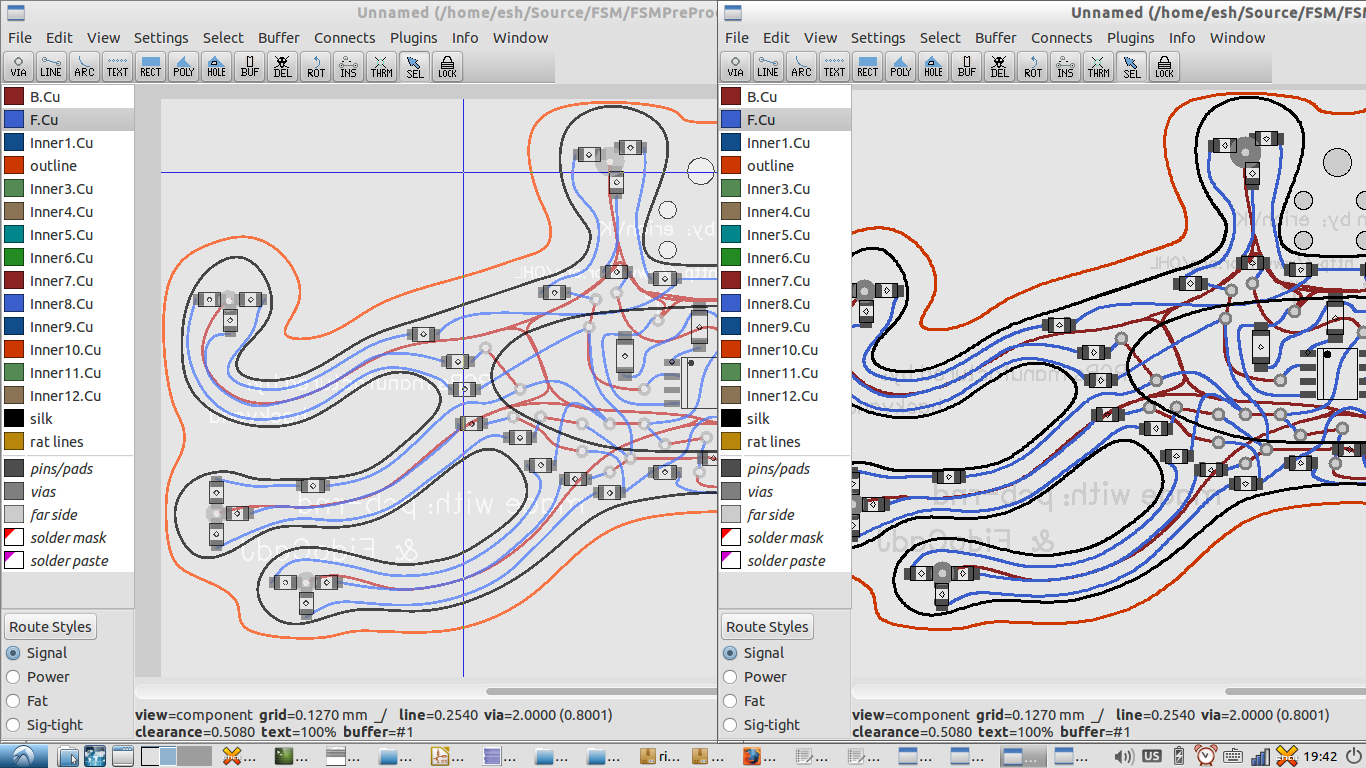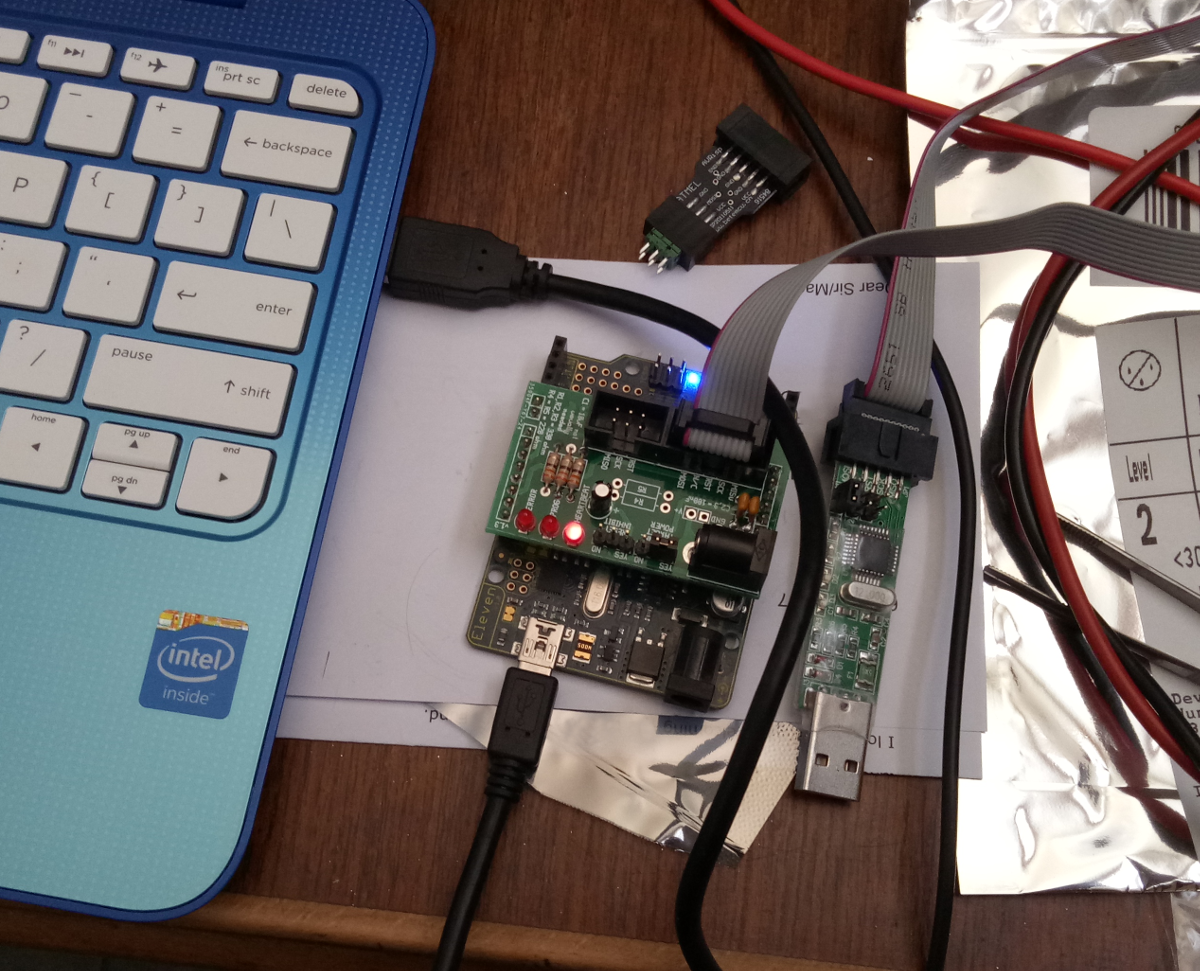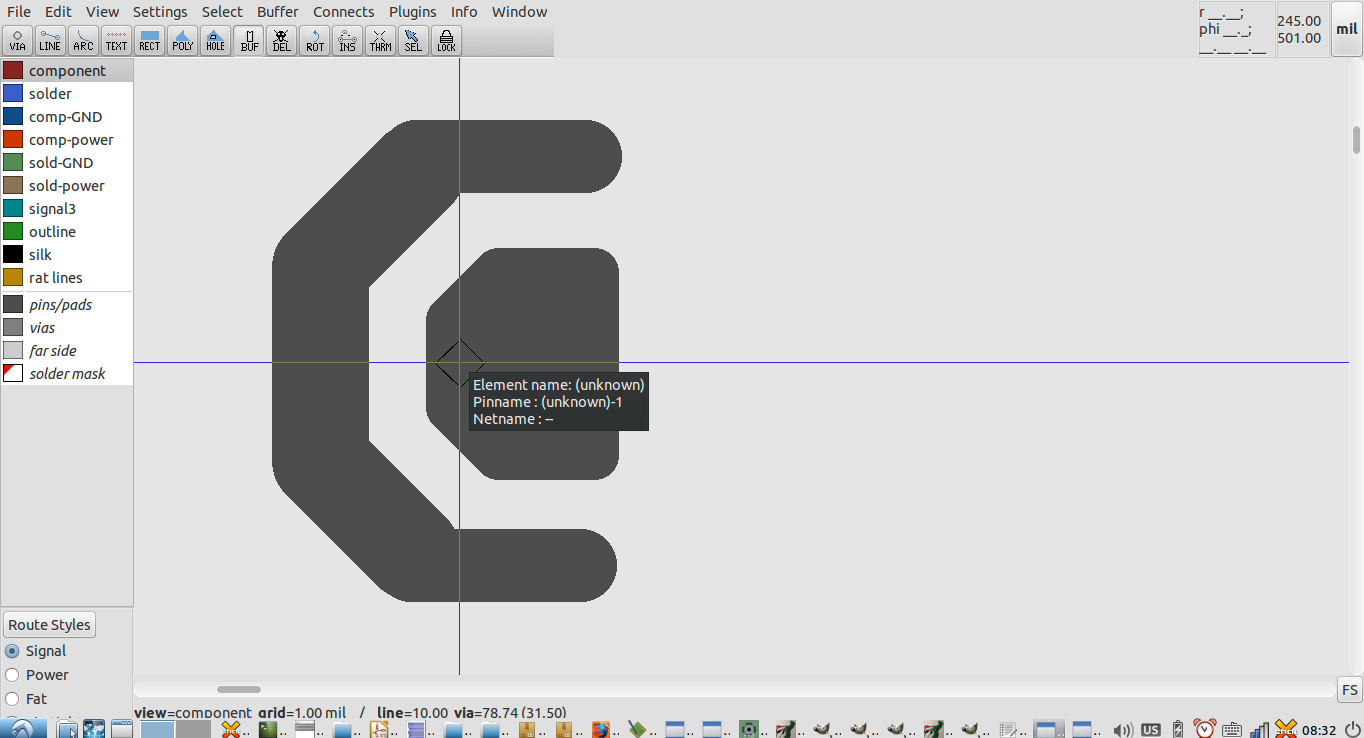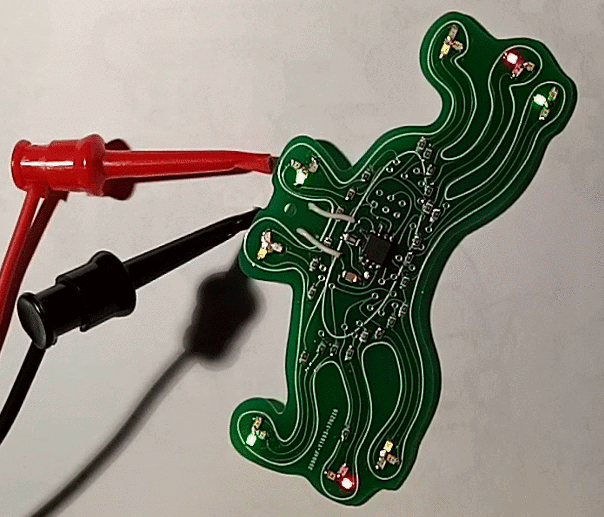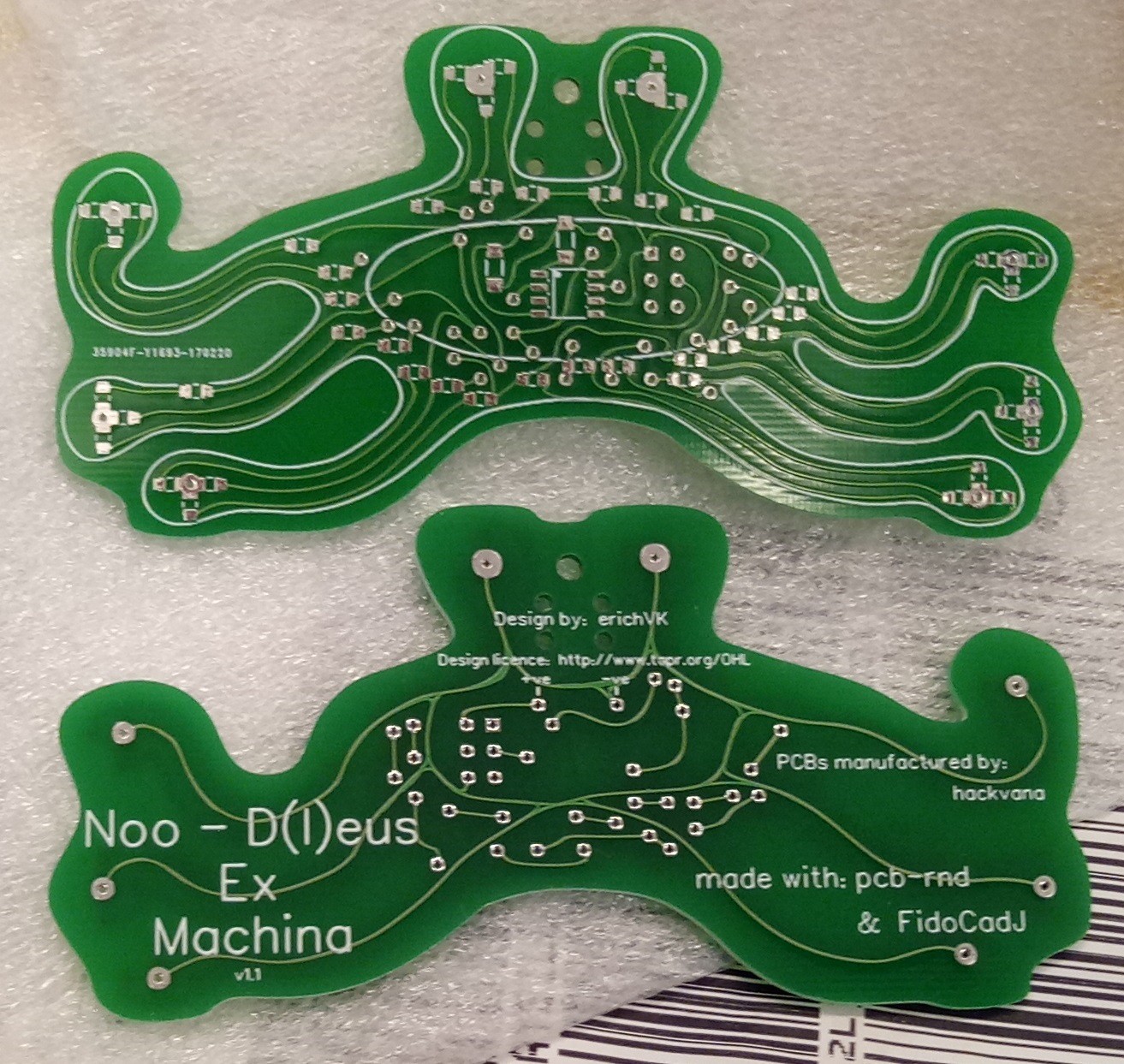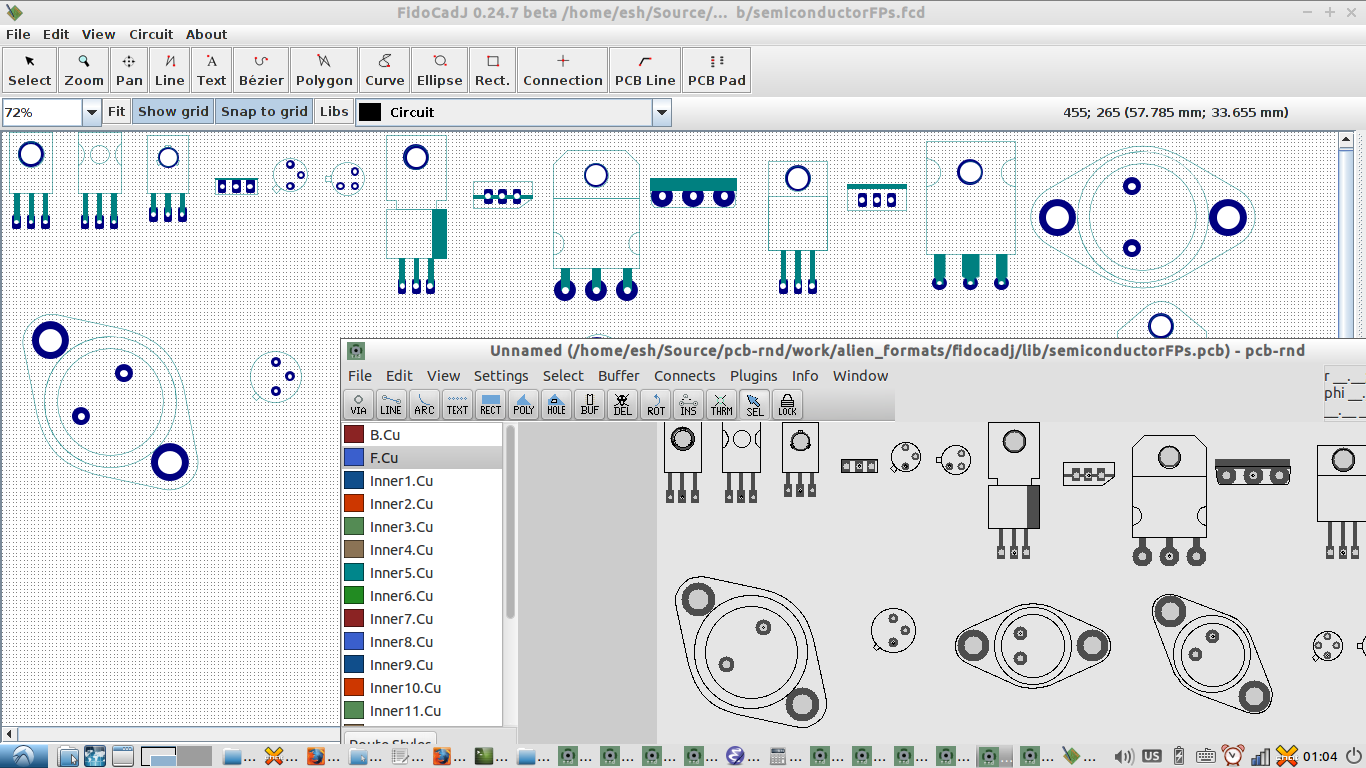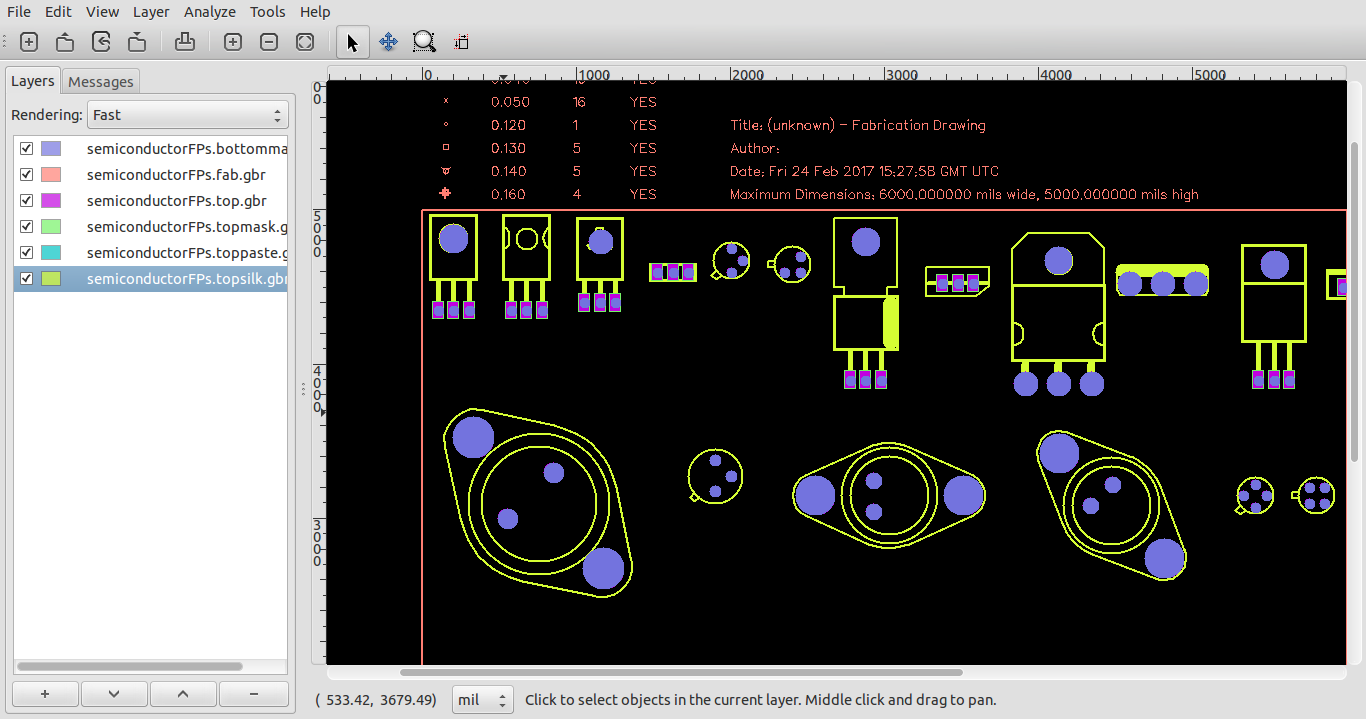-
pcb-rnd... now with GL rendering...
03/11/2017 at 09:49 • 0 commentsthe current svn version of pcb-rnd now has GL support.... so as well as looking nicer, working on the ~ 1MB layout for the next version will be quicker!!
GL rendering on the left, and vanilla gtk2 rendering on the right:
![]()
Soooo fast,...
-
Programming the attiny85 with an Arduino uno as ISP
03/11/2017 at 06:17 • 0 commentsIn the picture you can see the cheap ebay USBASP clone being updated with the arduino uno acting as a programmer.
You can also see the 10->6 pin adaptor being used as a "pogo pin"-esque "hold in place" programming fixture.
In the end I used the Arduino as ISP to program the flying spaghetti monster PCB, and didn't use the USBASP at all.
The important thing for success was having a programmer which could be used at 9600 baud by avrdude from the command line.
![]()
As far as bringing the toolbox to build the plane before you get on it, the Arduino is sporting a shield I designed in gEDA PCB some time ago for this sort of use. So, even the tools were built before arriving at the airport to build the plane!!
![]()
-
Ideas for v2 of the flying spaghetti monster PCB
03/10/2017 at 22:06 • 0 commentsI've made a solderable link footprint in pcb-rnd, and will add them to the revised layout for the three LED power distribution networks. This will simplify programming as well as testing after assembly.
I think I'll add support for the solderable link footprint as a paremtrically defined element; it only needs a simple awk script and glue code.
I might also add pads for a resistive divider so that the ADC on the spare pin can figure out what speed to flash at, so that one lot of code can be used for FSMs flashing at different rates, simply configured during construction with the right resistor network.
![]()
-
First Flying Spaghetti Monster PCB completed, attiny85 programmed
03/10/2017 at 13:04 • 0 commentsAfter an evening of hand soldering, and careful checking with the multimeter to make sure the light emitting diodes were the right way round, the first FSM PCB was finished.
![]()
I could not get the arduino IDE to behave with an attinty85 as the output target. After some hours trying different versions of the IDE, installing updated configuration files for avrdude, and support for additional models of attiny in the IDE, I concluded that baud rates over 9600 were doomed to fail.
Testing with avrdude on the command line showed that the target was alive and indeed an attiny85, when probed with 9600baud.
In the end I knocked up some c code, built is with avr-gcc, and then used avrdude to upload it at 9600 baud.
I will put the code up when the dev machine is nearby. In the meantime, the design file needs a few tweaks to make assembly and testing easier. So... don;t run off to order those pcb's just yet.
The main things to improve on the layout are
1) make the ISP header holes a bit bigger, although they worked fine as a "hold in place" set of contacts for programming.
2) add jumpers or solderable links so that the MCU can be programmed by the programmer without interference from the LED networks
3) maybe make provision for a reverse polarity protection diode
4) add a track that was missing between reset on the MCU and the ISP header
5) add a track missing between pin 6 and its LED network, perhaps with a solderable jumper.
6) make the MCU footprint pads a touch bigger, to make hand soldering easier
Overall, I'm pretty happy with the pcb-rnd -> fidoCadJ -> pcb-rnd workflow...
-
Flying Spaghetti Monster components have landed
03/09/2017 at 06:35 • 0 commentsTime to warm up the soldering iron for the flying spaghetti monster circuit boards...
-
The Noo-D(l)eus FSM PCBs arrived from hackvana
03/01/2017 at 21:49 • 0 commentsIt's a bit like the joke about Unix airlines; you bring the toolbox to the airstrip, build the plane exactly how you'd like it, then fly it wherever you want to go....
The cubic splines, cubic Bezier tracks, footprints and other features made it into the pcb-rnd layout and thence to gerber thanks to custom export module code written for FidoCadJ... and the stroked font used on the PCBs is the Hershey Sans Stroke font, faithfully ported from EggBot font description files with custom code a while back...
Next up... populating the boards...
![]()
-
FidoCadJ code git pull request done
02/26/2017 at 12:48 • 0 commentsThe export module code has been submitted to the FidoCadJ mainline from my fork
https://github.com/erichVK5/FidoCadJ/
Anyone wishing to give export to gEDA pcb-rnd/PCB a go before the new export module is integrated into mainline can build from my branch.
you simply git clone the repo
cd into it the directory, then
"make rebuild"
assuming you have the usual toolchains and Java installed
-
PCBs on their way
02/26/2017 at 12:43 • 0 commentsDHL sent an SMS telling me that my hackvana PCBs are on their way... yay!!
Not long now!!
-
Further refinements to export code
02/24/2017 at 15:43 • 0 commentsThe text is behaving pretty well with round trip testing pcb-rnd -> FidoCadJ -> pcb-rnd
![]()
and footprints have been improved with circle, silk rectangle and minimum line thicknesses for silk elements
![]()
If all goes well, there should be some FidoCadJ equivalent footprints on gedasymbols.org soon....
And here's an example gerber output of the Semiconductor footprints....
![]()
-
Fine tuning of pcb-rnd export to FidoCadJ
02/23/2017 at 14:46 • 0 commentsDid a bit of troubleshooting to improve the round trip with text on the PCB, when going from pcb-rnd->FidoCadJ->pcb-rnd. I think there might be a subtle scaling issue in FidoCadJ when loading text orientated at 180 degrees. I'll need to sniff around their loader/parser a bit... not that text is really expected to make the round trip losslessly, given differences in font rendering and formats. The end user would have to touch up text most times even if the scaling is behaving properly.
I also managed to build pcb-rnd on an android phone within gnu-root. It really needs a mouse for use though. A good example of the portability of C code.
I also got FidoCadJ's android app to work on the same phone.
A keen hardware hacker with a phone or android tablet and a scroll mouse could theoretically design and export gerbers for manufacture, all on the portable device...
Noo-D(l)eus Ex Machina - Freeform PCB design proto
The very first prototype PCB testing the new pcb-rnd->FidoCadJ->pcb-rnd toolchain easing freeform bezier & cubic spline track/PCB creation.
